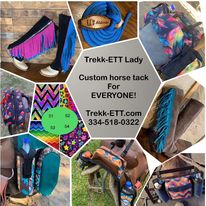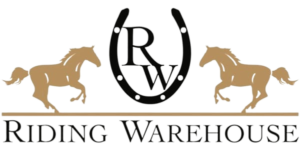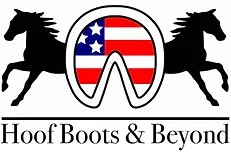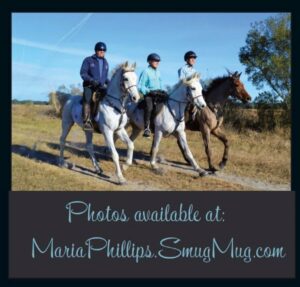By Sedra Member – Stephanie Sutch
The excitement of going to a ride and having a great weekend with your horse adventuring down the trail is a big part of the reason why we love the sport of distance riding. One big component of the ride experience that can often times be overlooked by the thrill of the ride is the camping environment. All in all, our horses will spend more time in camp then out on the trail at a ride. Most of us have had or seen a horse take a tour around camp without permission, and sometimes unfortunate accidents can occur. With that in mind, it should be of the upmost importance to provide a safe camping environment for our equine partners. With that goal in mind, the South Eastern Distance Riding Association, or SEDRA, undertook the task to examine camping practices and what riders do to make their camp safer for their horses.
The first issue that came to attention is the type of containment system used at a ride, and whether it’s being used properly. Often the cause of loose horses is improper set up or corralling too many horses together. The most common types of containment being utilized are electric pens, portable corrals, and high tie systems by various manufacturers. With all containment systems, prior training to ensure your horse understands and respects the system before coming to a ride is essential.
Links to portable horse containment systems.
Electric pens are the most popular form of containment, as they are both affordable and portable. SEDRA members found that use of a wider tape allows for more visibility from the horse’s perspective, and thus a more distinguishable barrier. In order for an effective charge, it must be grounded properly, and of course turned on. It is critical that when using electric pens, or any other containment system, that horses are trained how to use and respect them before they come to a ride. Some riders have found that they need to use a larger battery, such as a marine battery, to get an effective charge for their horse to respect. Other riders whose horses like to use their blankets to buffer the shock and escape found that leaving the chest straps loose and the chest exposed prevented that behavior from occurring. Pens that are too big, have loose tape, or contain multiple horses seem to invite trouble and increase the probability of horses getting loose.
Portable pens are becoming more popular, and riders who use them feel they offer more security and lessen the chance of their horses escaping. Various brands of portable pens are available and constructed from materials such as galvanized steel, pvc, and aluminum. Some precautions should be used when using these pens. For horses that tend to get heads or legs stuck through the rails, orange safety or construction mesh can be used. To reinforce the pen’s stability, longer metal rods can be used at the posts and pounded into the ground. Attaching the pen to the trailer side also can provide more stability, and the noise of the pen hitting the trailer can alert anyone inside the trailer if there is a problem.
A third method of camp containment can be in the form of a high tie system. This can be a safe and secure method of containing a horse who ties well. It is the easiest and fastest in terms of set up and take down. This system should be practiced with at home before being put to use at a ride, and for horses who do not tie well, this system is not recommended. A quick release snap should be used in case of emergencies and the addition of a garden hose over the tie line can help prevent abrasions in the event a horse gets caught up in it.
Another area examined in providing a safer environment for your horse while at camp was how to prevent and lessen the risk of accidents in the event horses escape. First and foremost on the list was to keep your camp, as well as your pens, free of any clutter and unnecessary items. Buckets that a horse can get a hoof through should never be left on the ground within a horse’s pen. Keep generator cords tucked under or as close to the trailer as possible. If you unhitch, park your truck back under the trailer neck, to prevent a loose horse from running into it. Also keep truck tailgates closed. If the ride camp has a perimeter fence and gate, keep it shut. Some riders include IDs on their horse’s halter or braided into their manes or tails in the event they should get out of camp. Another great proactive safety measure is to iron on reflective tape on your horse’s blanket, or make use of glow in the dark halters or bands so that they are more visible at night.
Horse Camping with Portable Panels and Electric Tape-Practical Horseman Magazine
Haiku Farm Blog -In which I talk about horse containment and stuff I’ve learned the hard way
5 Horse-Containment Options-Horse & Rider Magazine
Horse Trailer Ties -Horse Tie Comparisons – Karen’s Musings & Endurance Ride Stuff
All in all, horses are amazing animals that can perform remarkable escape acts and unfortunately can injure themselves on the most mundane and everyday items. We should all evaluate our own camping practices, and be willing to lend a friendly and helping hand to those in need, especially newcomers to the sport. By coming together we can ensure our horses have a safe and enjoyable experience at rides.










